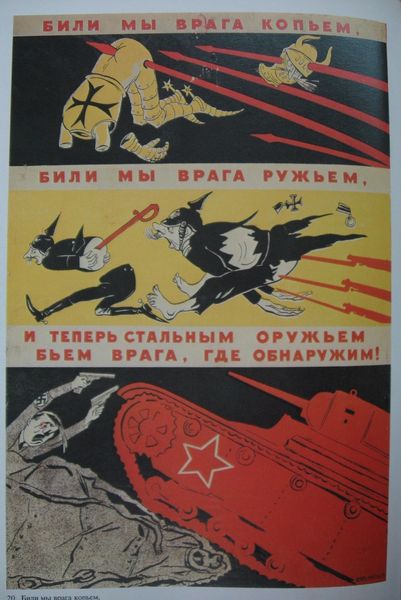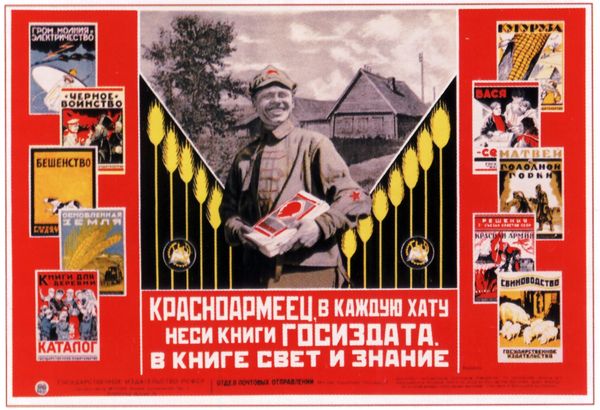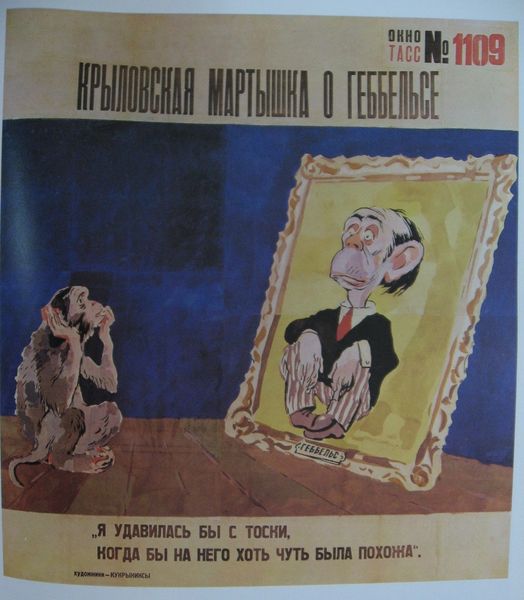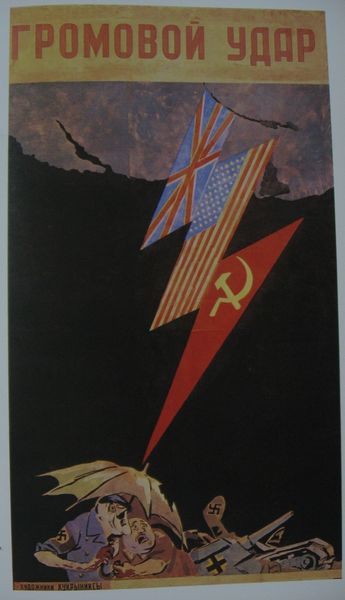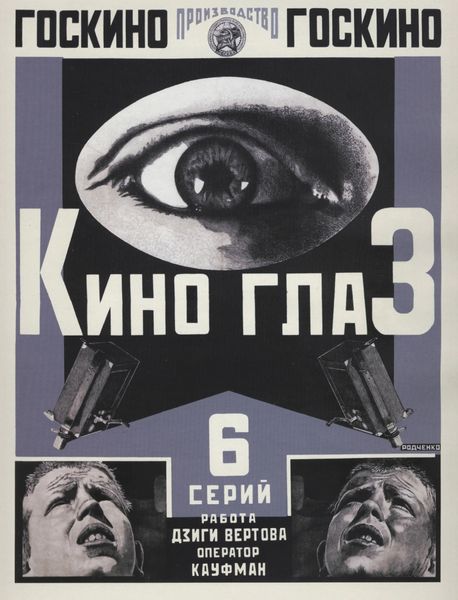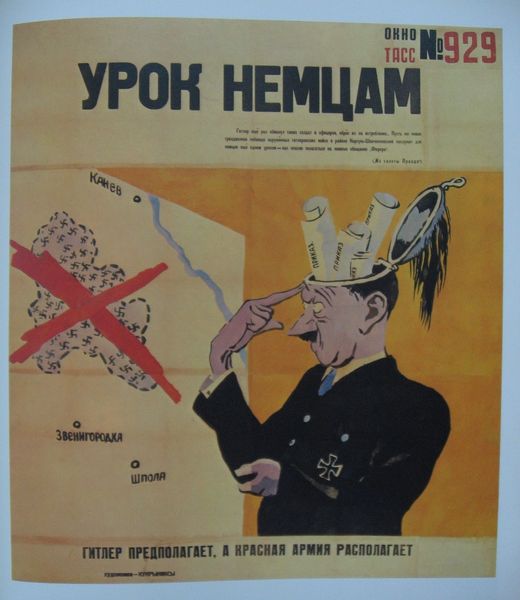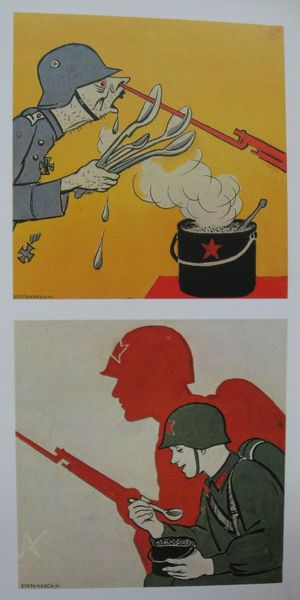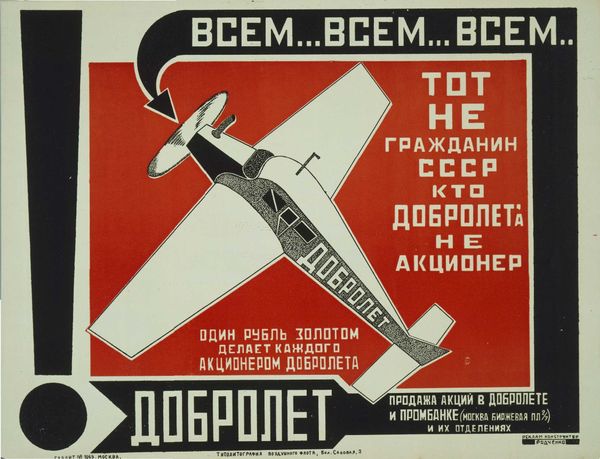
graphic-art, poster
#
graphic-art
#
caricature
#
war
#
caricature
#
socialist-realism
#
text
#
history-painting
#
poster
Copyright: Kukryniksy,Fair Use
Editor: This piece, "Three Years of War," is a poster designed in 1944 by the collective Kukryniksy. It definitely has a striking and forceful visual. What do you see when you look at this image? Curator: Immediately, I’m drawn to how this work engages with the war’s social and political context. It’s a caricature of Hitler, but it's much more than a simple mockery. Look at how the '3', representing three years of war, is positioned almost like a noose around his neck, squeezed by the tool with dates. What does this tell us about Soviet resistance and their projected victory? Editor: It’s very direct, very propagandistic. So the caricature serves a specific purpose then? Curator: Absolutely. It's about dehumanizing the enemy, creating a symbol that the public can rally against. Notice the grotesque features. But also, consider how the poster serves as a historical document, reflecting Soviet artistic expression within a Socialist Realist framework, during a pivotal point in World War II. Who do you think the intended audience of this poster was and why do you think the artists chose this style to communicate to them? Editor: Probably the general Soviet public? To boost morale... Maybe the simplicity of the style makes it easily accessible. Curator: Exactly. Its accessibility transcends class and education. Now think about the lasting power of images like this and the responsibility that artists bear when shaping public opinion during conflicts. It is really so different now, than it was then? Editor: I see how understanding its historical context really enhances its meaning and makes us think about the purpose of art as political speech. Curator: Indeed. And that’s precisely why examining art through an intersectional lens, considering its social impact and political implications, is essential. Editor: That really gives me a new appreciation for the role art plays in shaping perceptions and driving social change. Thank you!
Comments
No comments
Be the first to comment and join the conversation on the ultimate creative platform.
